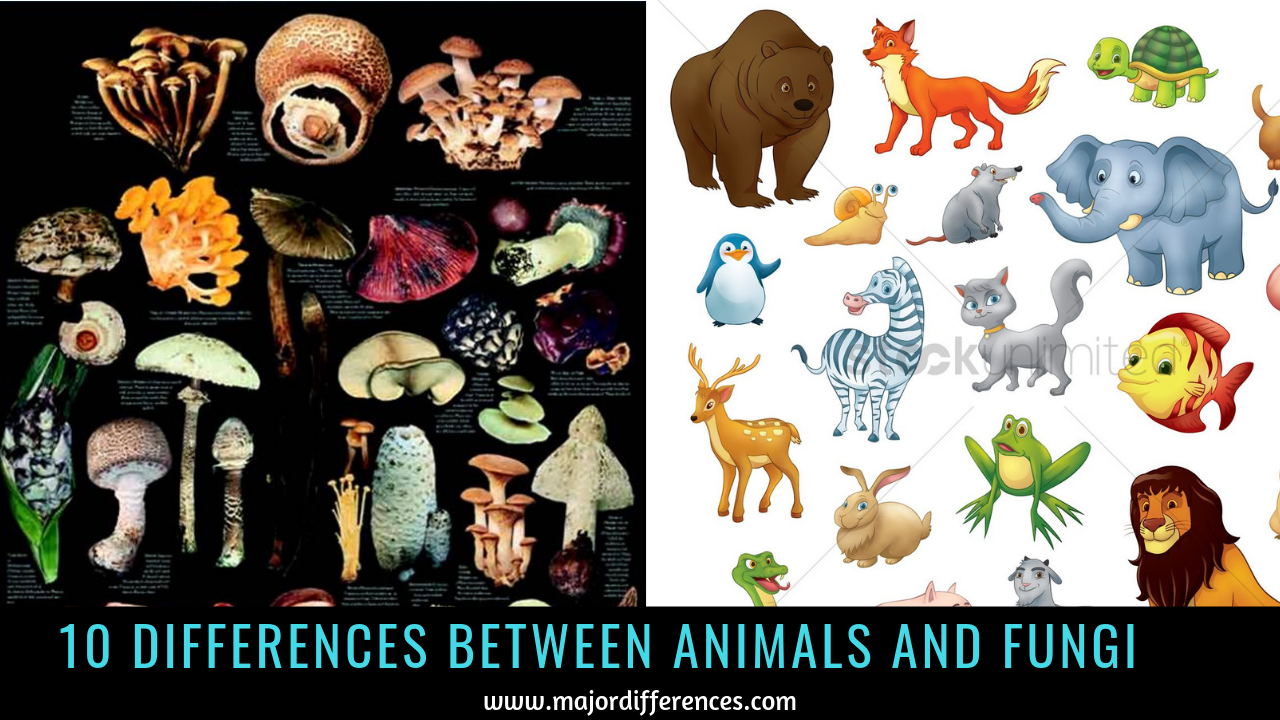Fungus vs Animals
Fungi are microscopic or macroscopic, non-chlorophyllated, spore bearing, filamentous, heterotrophic thallophytes which reproduce asexually as well as sexually
Animals are eukaryotic living organism that feeds on organic matter, typically having specialized feel organs as well as nervous organization as well as able to answer rapidly to stimuli.
Molecular phylogenetic studies revealed that fungi are to a greater extent than closely related to animals than plants
| Fungus | Animals |
| Fungal jail cellphone has a stiff jail cellphone wall made upwards of chitin | Animal cells lack jail cellphone wall |
| • In Fungus, mode of nutrition is Heterotrophic as well as absorptive • Secrete digestive enzymes • Feed yesteryear absorption inward soluble form • Saprotrophic, parasitic or symbiotic | • In animals, agency of nutrition is Heterotrophic as well as holozoic • Feed yesteryear ingesting venture nutrient materials which is thus internally digested as well as absorbed into their bodies |
| Fungus don’t movement around | All animals tin movement at to the lowest degree during some stage of their life cycle |
| Fungal thallus is mostly multi cellular, alongside filaments called hyphae as well as network of these filaments makes mycelium (Exception: Yeast is a unicellular fungus) | The trunk is multi-cellular, good differentiated into tissues, organs as well as organ system |
| Fungi similar plants are comparatively boring inward response as well as tin feel environmental signals as well as react accordingly, changing their development, direction of growth, as well as metabolism | Animals are capable of responding rapidly to external stimuli equally a effect of nervus cells, musculus or contractile tissue, or both. |
| Reproduce both sexually as well as asexually Asexual spores include zoospores, conidia etc | Generally reproduce sexually, involves ii individuals contributing genetic textile to arrive at offspring |
| Comparatively complex life cycle. In the life bicycle of a sexually reproducing fungus, a haploid stage alternates alongside a diploid phase. | Comparatively uncomplicated life cycle. Diploid adults undergo meiosis to arrive at sperm or eggs. Fertilization occurs when a sperm as well as an egg fuse. The zygote that forms develops into an embryo. The embryo eventually develops into an adult. |
| Dikaryotic stage is real mutual (presence of ii nuclei of contrary mating strains without fusion) as well as fifty-fifty dominant stage inward many fungal groups similar Basidiomycetes | Dikaryotic stage is absent |
| Most fungus has haploid dominant life bicycle alongside an long dikaryotic stage | Animals has diploid dominant life bicycle alongside haploid stage exclusively inward gametes |
| Example: Mushroom (Agaricus bisporus), yeast (Saccharomyces cerevisiae) | Humans (Homo sapiens), Rat, parrot, fish |
x




0 comments
Post a Comment